 PTAA
PTAA
OPV – Solar Cells
Uses and applications in organic photovoltaics (OPV) field.
Polymer for optoelectronic applications. Hole transport material for organic light-emitting diodes (OLEDs) and Perovskites. Amorphous p-type polymer semiconductor.
Four grades are available.
Custom Mw and pdi available.
Fluoro-PTAA is also available.



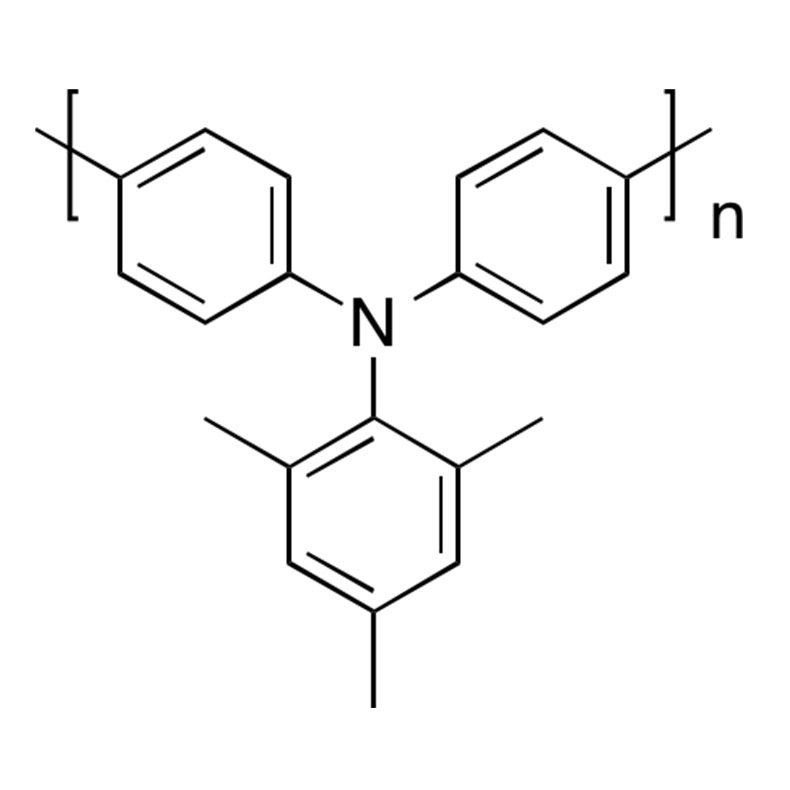
PTAA
SOL2426
Polymers
(p-type)
CAS 1333317-99-9
Various Mw ranges and specific Mw Polyrium batches available to fit your formulations, device fabrication processes and methods (Mw available from 5 kDa to 1000 kDa).
Download PDF Quotation
Fluoro-PTAA
OPV – Solar Cells
Uses and applications in organic photovoltaics (OPV) field.
Polymer for optoelectronic applications. Hole transport material for organic light-emitting diodes (OLEDs) and Perovskites. Amorphous p-type polymer semiconductor.
The use of this polymer can significantly improve the open-circuit voltage (VOC) and the fill factor (FF) of the cells in high-performance perovskite solar cells.
Fluoro-PTAA can be coated as a substrate material used for hole transport in the manufacture of many devices such as perovskite solar cells, organic light-emitting diodes (OLED) and organic field-effect transistors.
Four grades are available.
Custom Mw and pdi available.
PTAA is also available.

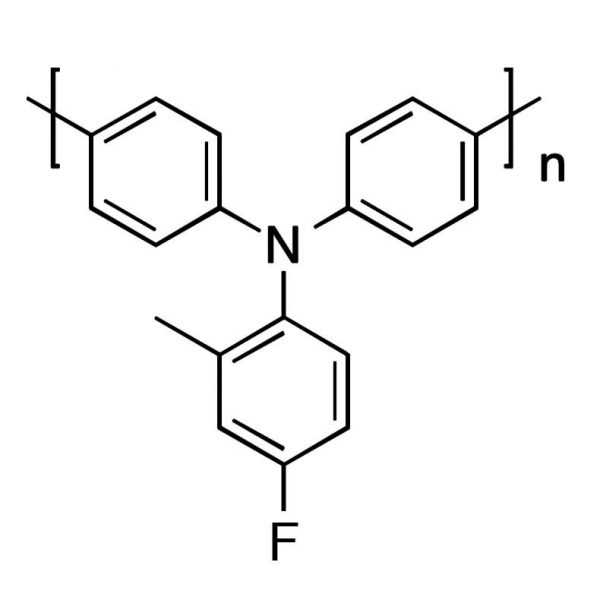
Fluoro-PTAA
SOL2446
Polymers
(p-type)
CAS N/A
Various Mw ranges and specific Mw Polyrium batches available to fit your formulations, device fabrication processes and methods (Mw available from 5 kDa to 1000 kDa).
Download PDF Quotation
PCBM – PC61BM
Uses and applications in organic photovoltaics (OPV) field.
PCBM is the common abbreviation for the fullerene derivative, [6,6] phenyl-C61-butyric acid methyl ester and is one of the most commonly used electron-accepting materials in organic photovoltaic devices.
It is commonly used in flexible plastic or electronic solar cells in conjunction with an electron donor material such as P3HT (SOL4106), PCDTBT (SOL4280) or PTB7 (SOL4700) to make high Open Circuit Voltage (Voc), high Power Conversion Efficiency (PCE) bulk heterojunction solar cells, >99.9% [6,6] isomerized.
It is a more practical choice for being an electron acceptor when compared to fullerenes due to its solubility in chlorobenzene. This allows for processable donor / acceptor solution mixtures, a necessary property for “printable” solar cells.
References
“Effect of PQT-12 interface layer on the performance of PCDTBT: PCBM bulk heterojunction solar cells”
Author(s): Amit Kumar, Smrity Ratan, Deepak Kumar Jarwal, Ashwini Kumar Mishra, Chandan Kumar, Abhinav Pratap Singh, Bratindranath Mukherjee and Satyabrata Jit.

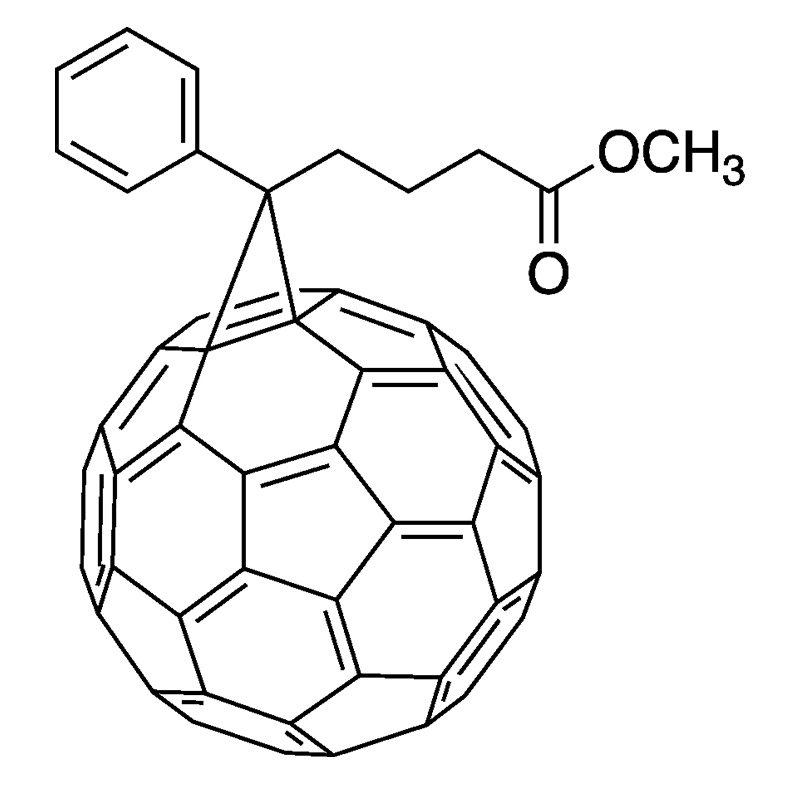
PCBM – PC61BM
SOL5061
Fullerenes
CAS 160848-22-6
Various Grades available to fit your formulations, device fabrication processes and methods.
Download PDF Quotation
Fullerene C60
Fullerenes C60 and their derivatives
Uses and applications in organic photovoltaics (OPV) field.
Progress has been made in the energy conversion efficiency of the devices and in the development of more stable solar cell architectures.
The C60 fullerene serves as electron acceptors in almost all high-performance devices.
Great growth is expected in this rapidly advancing technology.
Synthesized via a Solvent-Free Method. [1]
Green chemistry.
Environmentally friendly synthesis using renewable energy. [2]
[1] Solvents and volatiles are removed by subjecting the C60 to a controlled heat-cool process under dynamic inert medical nitrogen in order to suppress oxidation and preserve its pristine nature.[2] Hydroelectric powered plant in Quebec.

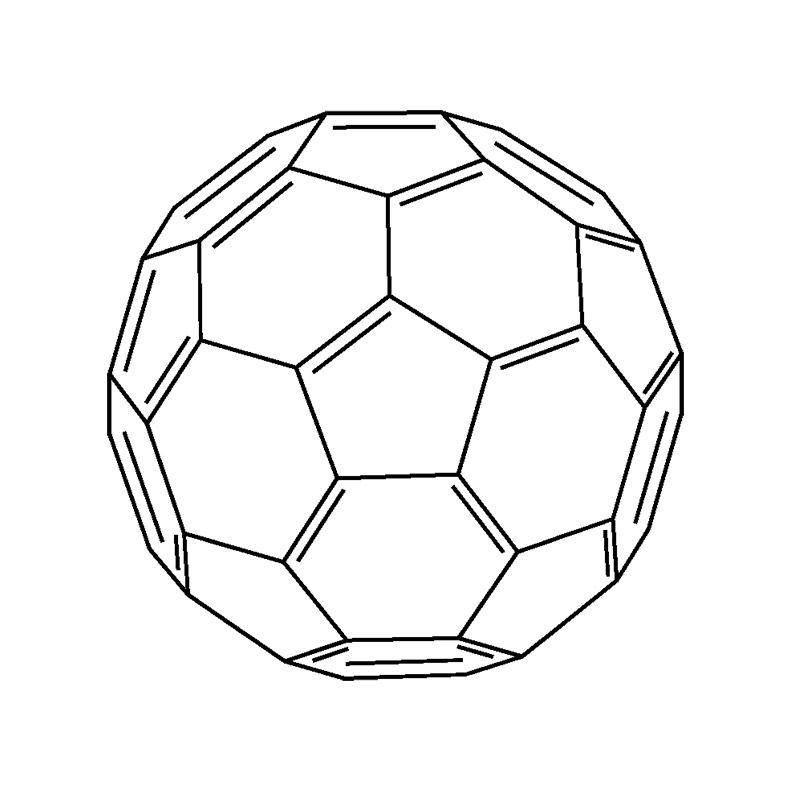
Fullerene C60
SOL5060
Solvent Free
99.99% Purity
Various Grades available to fit your formulations, device fabrication processes and methods.
Download PDF Quotation Fullerenol C60
Fullerenol C60
Fullerenol C60 and their derivatives
Uses and applications in organic photovoltaics (OPV) field.
Progress has been made in the energy conversion efficiency of the devices and in the development of more stable solar cell architectures.
The Fullerenol C60 serves as electron acceptors in almost all high-performance devices.
Great growth is expected in this rapidly advancing technology.
Synthesized via a Solvent-Free Method. [1]
Green chemistry.
Environmentally friendly synthesis using renewable energy. [2]
[1] Solvents and volatiles are removed by subjecting the C60 to a controlled heat-cool process under dynamic inert medical nitrogen in order to suppress oxidation and preserve its pristine nature.[2] Hydroelectric powered plant in Quebec.

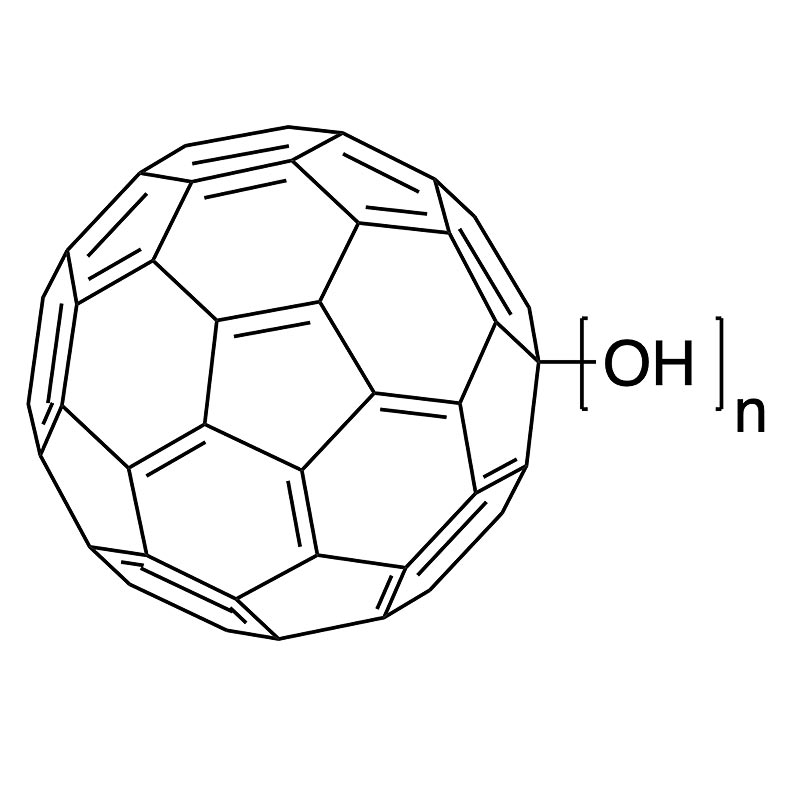
C60(OH)n n = 30-50
Fullerenol C60
Solvent Free
99.99% Purity
Various Grades available to fit your formulations, device fabrication processes and methods.
Download PDF QuotationITIC-2F
Uses and applications in organic photovoltaics (OPV) field.
ITIC-F is a non-fullerene, thermally stable electron-accepting small molecules for organic photovoltaic applications (OPV), which can replace PCBMs in various systems to reach high PCE values.
References
“Dispersive Non-Germinate Recombination in an Amorphous Polymer: Fullerene Blend”
Author (s): Kurpiers, J., Neher, D. Dispersive Non. NATURE – Scientific Reports 6, 26832 (2016).
“Ultrafast zero-bias photocurrent and terahertz emission in hybrid perovskites. Commun”
Author(s): Petr A. Obraztsov, Dmitry Lyashenko, Pavel A. Chizhov, Kuniaki Konishi, Natsuki Nemoto, Makoto Kuwata-Gonokami, Eric Welch, Alexander N. Obraztsov & Alex Zakhidov. NATURE – Communications Physics 1, 14 (2018).
“An Electron Acceptor Challenging Fullerenes for Efficient Polymer Solar Cells”
Author(s): Yuze Lin Jiayu Wang Zhi‐Guo Zhang Huitao Bai Yongfang Li Daoben Zhu Xiaowei Zhan. First published:07 January 2015.
PCDTBT
Uses and applications in organic photovoltaics (OPV) field.
PCDTBT is a low Bandgap polymer for opto-electronic applications. Can be used as an electron Donor to Acceptor materials such as PC71BM (SOL5071).
References
“Dispersive Non-Germinate Recombination in an Amorphous Polymer: Fullerene Blend”
Author (s): Kurpiers, J., Neher, D. Dispersive Non. NATURE – Scientific Reports 6, 26832 (2016).
“Ultrafast zero-bias photocurrent and terahertz emission in hybrid perovskites. Commun”
Author(s): Petr A. Obraztsov, Dmitry Lyashenko, Pavel A. Chizhov, Kuniaki Konishi, Natsuki Nemoto, Makoto Kuwata-Gonokami, Eric Welch, Alexander N. Obraztsov & Alex Zakhidov. NATURE – Communications Physics 1, 14 (2018).
“An Electron Acceptor Challenging Fullerenes for Efficient Polymer Solar Cells”
Author(s): Yuze Lin Jiayu Wang Zhi‐Guo Zhang Huitao Bai Yongfang Li Daoben Zhu Xiaowei Zhan. First published:07 January 2015.
P3HT
Uses and applications in organic photovoltaics (OPV) field.
P3HT (Poly(3-hexylthiophene-2,5-diyl)) is used as an electron Donor to acceptor materials such as PCBM (SOL5061) to make proven bench marked bulk heterojunction solar cells and organic transistors.
We offer two types with different regioregularities for a different variety of research purposes.
References
“Fullerenes: Non-transition Metal Cluster For Rechargeable Magnesium Battery Cathode”
Author(s): Ruigang Zhang, Fuminori Mizuno and Chen Ling.
“Donor‐Linked Fullerenes: Photoinduced electron transfer and its potential application”
Author(s): Dr. Hiroshi Imahori Prof. Yoshiteru Sakata. First published:29 October 2004.
“Fullerene Materials for Lithium-ion Battery Applications”
Author(s): Loutfy R.O., Katagiri S. (2002). In: Ōsawa E. (eds) Perspectives of Fullerene Nanotechnology. Springer, Dordrecht (Fullerene Materials for Lithium-ion Battery Applications.
“Prospects for Using C 60 and C 70 in Lithium Batteries”
Author(s): L. Seger, L. ‐Q. Wen and J. B. Schlenoff. ECS – The Electrochemical Society.
SOLARIS CHEM
AMERICA
-
Headquarters & Labs
3650 Bld. Cité-des-Jeunes,
Suite 101, Vaudreuil-Dorion,
Quebec, Canada
J7V 3Z6 -
(579) 217-0260
Toll free: (855) 489-3557 - Solaris Chem America
SOLARIS CHEM
EUROPE
-
Rnda. Circunvalación 188, M.11,
12003, Castellón, Spain - +(34)643637196
- Solaris Chem Europe
SOLARIS CHEM
MIDDLE EAST
-
15, 4th Floor, Bldg. No. 5.,
Wafa Complex, Street 103,
Area 6
Farwaniya, Kuwait - +965 66459915
- Solaris Chem Middleast
SOLARIS CHEM
SOUTHEAST ASIA
-
(Singapore, Malaysia, Thailand, Indonesia, Vietnam, Philippines, Myanmar)
No. 27 Woodlands Industrial Park E1,
#03-02, Singapore, 757718 - +65 9363 8706
- Solaris Chem Southeast
SOLARIS CHEM
ASIA
-
(Taiwan, China, Hong Kong)
2F., No. 67, Aly. 30, Ln. 136, Kangle St., Neihu Dist.,
Taipei City 114, Taiwan (R.O.C.) - +88 69 8900 9807
- Solaris Chem
SOLARIS CHEM Representative
JAPAN
-
(Japan)
TOSCO Co. LTD.
401 Daido Bldg., 3-5-5,
Uchikanda, Chiyoda-ku
Tokyo 101-0047, Japan - +813 5295 6316
- +81 5295 6311
- Website
- Solaris Chem Japan



